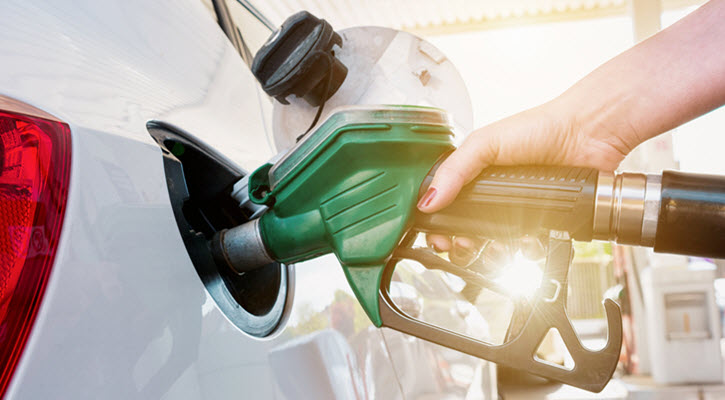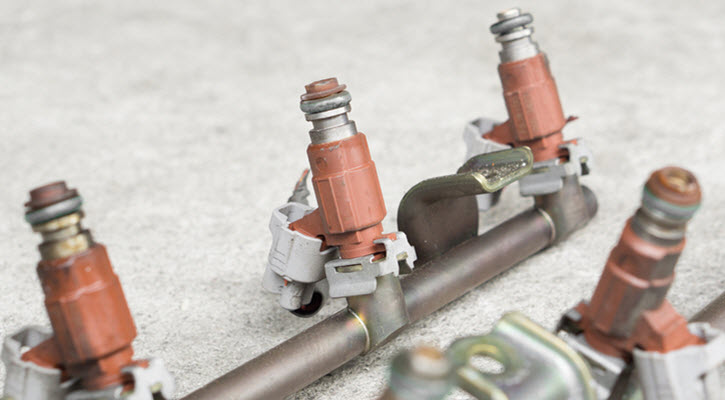
How Does a Fuel Pressure Regulator Work?
02 Dec, 18
You might not have heard the term fuel pressure regulator, but as an imperative component of any EFI system, your vehicle will not operate without it. The fuel pressure regulator sees that the fuel rail builds up enough pressure to support the vehicle’s fuel injector system with the right amount of fuel. Without the fuel pressure regulator, the fuel will go straight through your car’s system and never reach the injectors. If the fuel tank pass-through is blocked completely, too much fuel will be forced into the fuel injectors and cause them to fail.
To make sure there is a proper air and fuel mixture, an adequate fuel mixture is necessary for all driving situations, ranging from idling to low revs to higher revs. This is where the fuel pressure regulator steps up and does its job ensuring that the fuel supply meets the demand.
What exactly is a fuel pressure regulator?
Used to ensure steady fuel supply, a fuel pressure regulator is needed to keep your car going. Even if there are dramatic fuel demand changes, your fuel pressure regulator will make sure the fuel is flowing properly. There are two sides to the fuel injector. The fuel rail puts one side of the fuel injector under pressure while the other side of the injector is air boosted by a compressor or a turbo.
The perfect ratio of fuel to air is 1:1. While the fuel pressure regulator oversees the regulation of fuel pressure against the air boost/pressure, it enables the fuel injector to keep the ratio right between the boost and the fuel. The fuel pressure regulator has a diaphragm to control the bypass valve, which is known as the ball seat. It opens and closes to adjust properly to allow for an even and steady fuel delivery. When the boost is applied to the top of the regulator, then the diaphragm that is attached to the bypass valve is forced down by a spring to reduce excess fuel. This causes the fuel pump to work harder, allowing the fuel pressure to increase while increasing the intake manifold’s boost pressure.
How Do I Know The Fuel Pressure Given By My Regulator?
The fuel pressure regulator has a convenient pressure port where a fuel pressure gauge can be attached. In some cases, a fuel pressure sensor is used in place of a fuel pressure gauge to provide digital output.
Sometimes people opt to change out the fuel pressure regulator on their vehicle. A larger fuel pressure regulator can take more flow and keep a higher pressure and maintain the 1:1 ratio. Some of these fuel pressure regulators can handle different alcohol fuels, such as methanol or ethanol, while a less expensive fuel pressure regulator often suffers a broken diaphragm after being exposed to those kinds of fuels. If the diaphragm in the fuel pressure regulator breaks, it can cause your engine to suffer serious damage. Repair or replacing an engine is an extremely expensive repair, so you need to make sure your fuel pressure regulator is in optimal working order and have it checked as soon as you notice any unusual behavior in your vehicle.

Signs of a Bad Fuel Pressure Regulator
If you notice any of these symptoms, your vehicle might have a bad fuel pressure regulator. That is an issue that needs to be addressed right away.
- Blackened spark plugs – Take out a spark plug to see if the end is sooty, which could mean a bad fuel pressure regulator.
- Runs poorly and engine stalls – If your engine isn’t running smoothly or idles poorly it could be a sign of a bad fuel pressure regulator. The same goes for your vehicle occasionally stalling.
- Black smoke – When black smoke comes out of your car’s tailpipe, it is a sign that there is a problem with the fuel pressure regulator.
- Gasoline smell on dipstick – If you smell gas on the oil dipstick it is a sign of the fuel pressure regulator failing.
- Gasoline dripping from the tailpipe – If you notice gas dripping from the tailpipe of your car, it is a sign of either overfilling the fuel tank or a bad fuel pressure regulator.
To have your vehicle checked and to make sure its fuel pressure regulator is operating as it should, call on the German auto care experts in Santa Barbara, CA, at Santa Barbara Autowerks.




